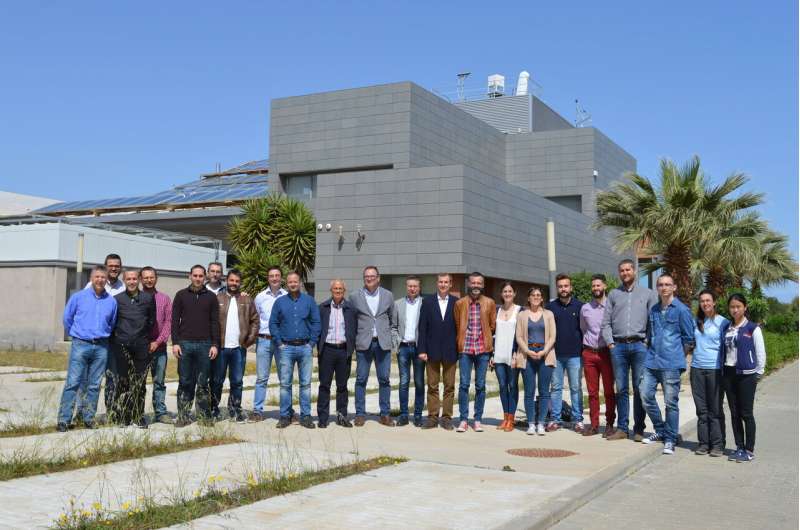System that adapts the temperature and lighting in a building according to the climate

A research team from the University of Almeria has designed an automatic software program that predicts the right temperature for the users of a building and adapts it to their activity in a specific room. The prototype works with a mathematical model that adjusts the heat according to variables such as the outside climate -to obtain an energy saving of 11%- and the thermal and lighting comfort of the user. In addition, the system uses renewable energy installations in an autonomous way to achieve more efficient consumption, reduce CO2 emissions and save costs.
This system analyzes typical days at different seasons of the year and the program decides what temperature and illuminance are best suited to each particular room, based on criteria such as weather conditions outside and human activity carried out in each specific room. "Normally, adapting to the thermal and lighting needs of each user at any given time involves more energy expenditure because the user constantly adjusts the air conditioning systems to adapt them to his or her liking, which depends on each person's subjective viewpoint. The aim of this technology is to balance well-being with spending," Francisco Rodríguez, researcher at the University of Almería, explains to Fundación Descubre.
The results obtained over a full year of operation of this system have been gathered in a study titled "Multiobjective control architecture to estimate optimal set points for user comfort and energy saving in buildings," published in ISA Transactions. Researchers explain that, depending on the outside weather conditions, the type of work carried out in each room of the building, the available energy sources (renewable and traditional) and the cost of each one of them, the system autonomously defines a set of solutions that allow building users to work in thermal comfort and with adequate lighting, as well as with low energy consumption.
Subsequently, the system applies mathematical models to predict the climatic conditions both outside and inside different rooms, as well as the energy generated by the building's auxiliary renewable energy facilities. This is how the program decides which solution is best suited to each particular room. Researchers remark that it is possible to introduce additional criteria so that the system can analyze more ways of improving the thermal and lighting comfort of the user. "Work carried out in a laboratory is not the same as the activity performed in an office or gymnasium. Each room requires a different temperature setting for the well-being of those performing each activity. The device determines the ideal settings autonomously," says Francisco Rodríguez.
Tested prototype
To develop this program, the Automatic Control, Robotics and Mechatronics group first analyzes the needs of each user and relates them to the energy consumption of the building over a given period of time. By doing so, they define current deficiencies and study the performance of the existing heating, ventilation and air-conditioning systems.
Generally, this system operates on buildings that consume electrical energy; however, the system itself 'chooses' the optimal energy source when the building has additional energy resources in order to save costs, taking into account the needs of the facility. For example, if there is a photovoltaic plant with storage available, the system will assess whether it is more economical to use this type of energy when it is generated or to take it from the electricity grid. This saves costs if the system predicts high power consumption for several hours when the price of the electricity supply network is higher.
Researchers have tested this system in the CIESOL building of the Solar Energy Research Centre (UAL-CIEMAT),1 where there are spaces for offices, laboratories, industrial warehouses and meeting rooms, during the months of March to July. They explain that to implement this system in another construction it would be necessary to collect data for at least a year previously in order to adapt the parameters used by the system for predicting suitable temperature and lighting in that new environment. The researcher Francisco Rodríguez says, "The prototype of this device is still in use in the first building where it was installed. We believe that it is ready to be adapted to any other building."
More information: M. Martell et al. Multiobjective control architecture to estimate optimal set points for user comfort and energy saving in buildings, ISA Transactions (2019). DOI: 10.1016/j.isatra.2019.10.006

















